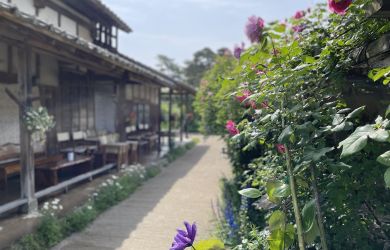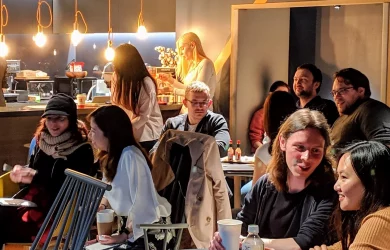
May 12, 2011
Citizens’ Nuclear Information Center
Working towards a nuclear-free world
By Metropolis
Originally published on metropolis.co.jp on May 2011

CNIC’s co-directors, from left to right: Yukio Yamaguchi, Baku Nishio, Hideyuki Ban. Courtesy of CNIC
It’s a message that some have been trying to communicate for a long time. The Citizens’ Nuclear Information Center, founded in 1975, has made it a central part of their mission to provide people with reliable information and public education about nuclear power. The assumption is that if people clearly understood the danger, they could not support it.
“CNIC is dedicated to securing a safe, nuclear-free world,” says co-director Hideyuki Ban. “To that end, we provide alternative policy input critiquing Japan’s nuclear energy policy from a scientific perspective.”
The accident at Fukushima Daiichi was no surprise to CNIC, who have been criticizing TEPCO’s seismic evaluations for some time. In a leaflet released after the 2007 Chuetsu-Oki Earthquake damaged another of TEPCO’s plants, researchers found that the company had ignored an active submarine fault line in their original application to establish the reactors. The researchers said that a major earthquake “could and should have been anticipated” and that “given [TEPCO’s and the government’s] attitude, the same thing or worse could happen again.”
And so it did. In the days after the Tohoku-Pacific Earthquake, while TEPCO representatives talked about the unforeseen magnitude of the earthquake and tsunami, CNIC released this statement: “A nuclear disaster which the promoters of nuclear power in Japan said wouldn’t happen is in progress. It is occurring as a result of an earthquake that they said would not happen. This could and should have been predicted. It was predicted by scientists and NGOs such as CNIC.”
However, it is not just the potential for radiation leakage after a natural disaster that concerns CNIC. Even when the plants are operating normally, there is the question of what to do with the dangerous byproducts.
“No country has solved the problem of radioactive waste,” says Ban. “For over half a century, nuclear energy has been like a house without a toilet.” So far, the best solution available is to dig a very deep hole and bury spent fuel, where it can take thousands of years to decay.
There are also concerns about the overlap between nuclear energy programs and the weaponization of nuclear material. “History shows that determined nuclear proliferators can and will use the technology, material and skills gained through so-called “peaceful” nuclear energy programs to build nuclear weapons,” says Ban. “The Japanese government and industry are promoting nuclear exports willy-nilly, even though very little progress has been made on closing the gaping loopholes in the international nuclear non-proliferation regime.”
If anything good comes out of the disaster at Fukushima Daiichi, CNIC hopes that it will be more awareness that, even outside of the exclusion zone, our dependence on electricity from nuclear power comes with a steep price. As Ban puts it, “It is vital that more and more people take responsibility for the energy and resources they consume in their daily lives. If people are not even willing to do that, we can kiss the planet goodbye.”
To find out more about CNIC, visit www.cnic.jp.







